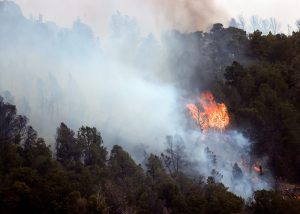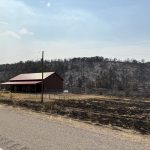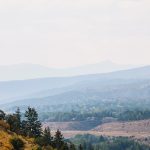Vail hosts 4-day summit featuring workforce, affordable housing leaders from 26 mountain communities

Special to the Daily
Long identified as a critical problem in ski towns across the West, the lack of affordable housing in mountain communities has reached a crisis culminating in this week’s U.S. Mountain Community Summit Monday through Thursday in Vail — a ticketed confab of 100 impact investors, developers, land planners and business leaders working on public-private partnership solutions.
“One of the reasons we decided to host the event in Vail was, following extensive research analysis, we discovered that the town of Vail has one of, if not the most, progressive deed restriction philosophies and programs,” said Natalie Spencer, founder of summit organizer APX1. “It’s absolutely appropriate for us to host this in a community that’s pioneering one of the solutions.”
The summit is a collaboration with Vail Resorts, the Vail Valley Partnership, RCLCO Real Estate Advisors and the town of Vail. It features workforce and affordable housing thought leaders from 26 mountain communities.
“We’ve spent so much time focusing on the problem, and I think everybody gets the problem,” town of Vail Housing Director George Ruther said. “People are coming to this to participate in a solutions-based conversation about how we address the problem. In the last year or two we’ve made significant headway and we have some real momentum behind this housing conversation.”
‘We all have a housing problem’

Support Local Journalism
In 2017, Vail launched a plan called Vail InDeed aimed at deed-restricting an additional 1,000 units by 2027, bringing the total number of deed-restricted housing units (with restrictions on short-term rental and local work requirements for occupants) to 1,700. Ruther says the program is on course to meet those goals, even without a dedicated long-term funding source.
Ruther added he’s very interested in what Vail InDeed 2.0 will look like and whether its success can be duplicated in other ski towns from Sun Valley, Idaho, to Jackson, Wyoming, to Lake Tahoe, California.
“We all have the same tools in our toolbox, which are inclusionary zoning and commercial linkage and development impact fees and such, and we all have a housing problem,” Ruther added. “The Vail InDeed program was an effort to look at a new and more innovative approach because the approaches that we’ve been using just haven’t been solving the problem.”
And that problem has led to local businesses folding or scaling back services when they could actually be expanding if there was enough available labor, according to Ruther and representatives of the business community.
“Workforce housing is consistently listed as the top pain point for local businesses with regards to business growth and employee retention,” Vail Valley Partnership President and CEO Chris Romer said. “And we’re not unique. Mountain resort communities across the country are faced with similar challenges.”
Spencer says mountain towns need to band together because no one community has all the answers and no one company can offer all of the solutions. Romer agrees that seemingly competing destinations can find strength in numbers and offer regional solutions that will benefit the entire outdoor recreation and mountain tourism industry.
“We’re fortunate to be able to host the inaugural summit and expect attendees will learn new practices, reinforce best practices and learn from others to strengthen their local efforts,” Romer said. “We believe we’re better together and the U.S. Mountain Community Summit is a great example of peer learning.”
‘Leveraging private-public partnerships’
Spencer comes at the housing crunch with a global perspective, having grown up in Idaho and then traveled extensively after launching companies dedicated to solving complex problems from food security to water scarcity to infrastructure challenges in remote mountain communities around the globe that are “geo-fenced” by nature.
Returning to Sun Valley to raise a family, she realized the severe housing challenges facing even middle- to higher-income people trying to find a way to live and work in mountain communities across the West. An “impact investor” friend then challenged her to find some innovative solutions. Thus began a six-month study that led to the first U.S. Mountain Community Summit.
A former ski racer and a certified ski guide, Spencer discounts the notion of the “elevator pitch” in favor of the “chairlift pitch” to network and get deals done. There’s a heavy dose of that approach in the three-day summit schedule, along with the requisite panels and discussions. Those topics range from the potential of prefabs to incentivizing investment in aging resort real estate to new workforce housing solutions to innovations in impact investment.
“You cannot solve this problem without committed impact investors,” Spencer said “And for us that’s a very specific definition. These are folks who have pre-agreed to a 10 percent IRR (Internal Rate of Return) for 30 years … That’s a very unique investor, right? A normal developer is looking for like a 30 to 40 percent return on investment in three years.”
It’s a philanthropic mindset that’s aimed at improving a community with a lower, longer-term yield. It will take public policies coupled with that kind of private investment to solve the problem, Spencer adds, and she’s echoed by others versed in the workforce housing world.
“From Vail to Gypsum, the Eagle River Valley community has prioritized bringing on new housing projects by thinking creatively and leveraging private-public partnerships,” said Kristin Kenney Williams, of Commfluent Inc., a political affairs consultant and a member of the Eagle County Housing Task Force who’s helping to organize the summit.
“Being able to learn from thought leaders and impact investors from across our fellow mountain resort communities in an ongoing dialogue will help us achieve new opportunities,” Kenney Williams added. “Vail and our surrounding towns were built on bold and collaborative ideas and bringing that passion to housing will ensure one strong community.”
For more information on the first U.S. Mountain Community Summit today through Thursday in Vail, visit the APX1 website at http://www.apx1.co.










